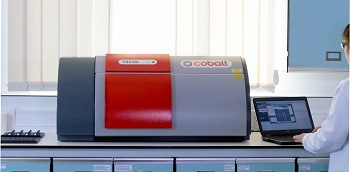Jan 26 2016
Actavis UK has written about how the generics manufacturing giant gained approval to use transmission Raman spectroscopy to release product as an alternative content uniformity (CU) test.

The article, written by Dr Julien Villaumié, R&D Senior Scientist, and Dr Hilary Jeffreys, Technical Transfer Manager, in the July edition of European Pharmaceutical Review, is titled 'Revolutionising Raman with the transmission technique' and describes how Actavis gained regulatory approval from the UK's Medicines and Healthcare Products Regulatory Agency (MHRA) to release products using Cobalt’s TRS100 instrument.
High Performance Liquid Chromatography (HPLC) is the most common release test for active content determination. By removing the dependence on this standard, expensive and time-consuming "workhorse" technique, Actavis was able to save cost and resource from the QC laboratory. Actavis’s aim was to modernise sample testing to speed up the process of product supply to the market.
Transmission Raman was identified as a chemically-specific method that;
- eliminates sample and standard preparation time
- allows routine analysis in minutes per batch
- eliminates environmental waste (no need for solvents or consumables such as HPLC columns).
Drs Villaumié and Jeffreys detail the method development process - from initial feasibility studies, calibration & validation through to routine use of the model - and describe the regulatory framework for their successful method approval.
The Transmission Raman methods have received regulatory approval by the UK Medicines and Healthcare Products Regulatory Agency as alternative methods for the release of commercial product to the market. Prior to this, HPLC and/or thin layer chromatography were the licensed methods for the bulk assay, uniformity of content, and ID testing.
The results obtained demonstrated that transmission Raman was a very accurate technique, equivalent to HPLC, for QC release testing.
Transmission Raman spectroscopy (TRS) is an alternative to HPLC for tablet & capsule content uniformity testing and polymorph quantification. Pharmaceutical manufacturers are increasingly using Cobalt's TRS100 system in R&D and production environments because of the benefits it offers: TRS takes seconds per sample, is robust to sample variation, needs no preparation, solvents or consumables and saves significant cost and resource per batch.
The authors believe transmission Raman has a big future in product release QC testing, describing how Actavis plans to adopt the technique for a wider range of products in an effort to increase efficiency in solid dose manufacturing:
The development and regulatory approval of transmission Raman methods for the routine QC testing will revolutionise how samples are analysed for assay, content uniformity and identification.
These non-destructive Raman test methods require no sample preparation, standards, solvents, glassware, or consumable for routine QC analysis, making them very fast and simple alternatives to traditional liquid chromatography.
Actavis UK Ltd is actively developing further Transmission Raman methods for different solid dose products with the aim of reducing the laboratory costs and the time for release of products to the market.
All quotes are taken from the full article, which is available on the European Pharmaceutical Review website.